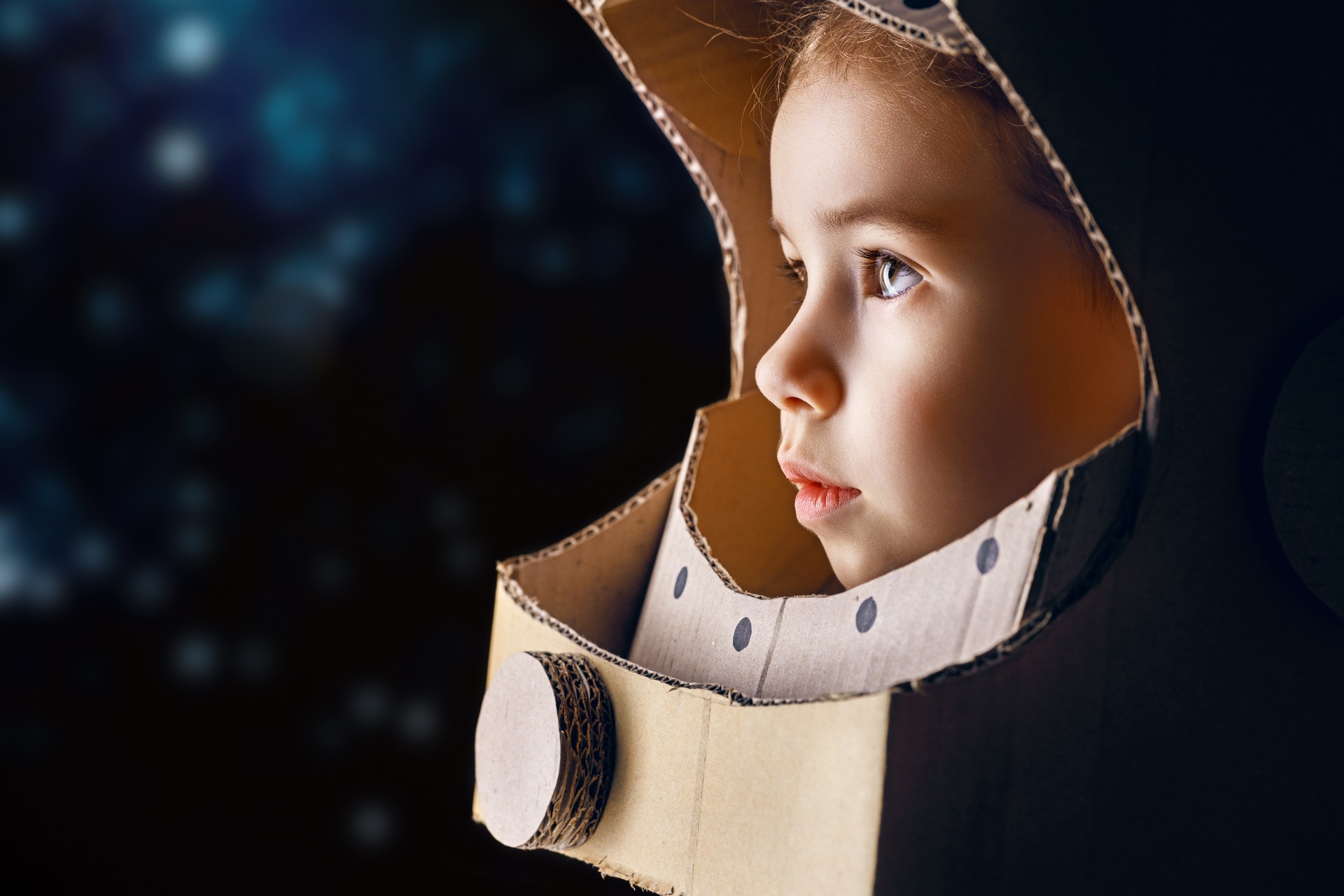Toddler
4 min Read
The Benefits of Playing Pretend

June 13, 2023
Toddler
4 min Read

June 13, 2023

Are some of your best childhood memories playing pretend? When I was a toddler we lived in a three-level home. Initially I only scampered about the main and second floors. That’s because our third, underground level was DARK and SCARY.
Creaky, steep, stairs led to the dusky, windowless, unfinished basement, which contained decrepit furniture, cement flooring and exposed pipes. It was utterly menacing territory to me. I was certain a sleeping dragon would wake and pierce my succulent flesh if I ventured to that dreaded place.
Then one rainy day when I was bored with my siblings and upstairs surroundings, my fictional friends Whoosiz and Waassiz appeared. And suddenly the basement became my favourite domain. I constantly skipped down to play lively games with my pretend pals.
Apparently I was adorable when I frolicked with my imaginary mates. However I wasn’t merely being cute. I was also learning resilience and visualization skills by inventing this soothing dream world with welcoming hosts.
As a jaded adult I still turn to fake friends in a crisis. They aren’t Whoosiz and Waasiz. However I envision warm, approving mentors nearby when I give presentations or handle other nerve-shattering situations.
Kourtney Disney-King is the owner of Kinder Hill Preschool in Regina, Sask. She’s also a huge advocate of imaginative play, which she considers an integral part of a young child’s education.
“Creative play is important for many reasons,” says Kourtney, “It makes children more social, enhances their problem solving and language skills and expands their personalities.” She says that children may feel braver making new friends if they pretend to be someone else during a game, for instance. They’ll also feel more confident tackling challenges in different ways and trying out new words if they are cloaked in make believe identities.
“Kids also use their bodies very expressively when they’re being imaginative, which improves their gross and fine motor skills,” says Kourtney.
Children also practise empathy and role playing when they use their imaginations as well says Hazel Black, a North Vancouver mom.
“My two-year-old daughter Mackenzie spends lots of time fussing over her dolls,” Hazel says. “I suppose she’s being me when she plays like that and modelling maternal behaviour.”
So “let’s pretend…” is not only fun, but crucial to a child’s development. And it’s easy and inexpensive to set the stage for fantasy acts.
Kourtney provides few toys at her school and supplies materials like glass beads, pine cones, cut-out shapes, variously textured fabric snippets and blocks.
“Kids find all kinds of uses for items that don’t have specific purposes,” explains Kourtney.
“They might wrap dolls in velvet for example or rehearse adult tasks.”
While it is quite simple to foster inventive play, creativity is easily kiboshed with the click of a remote control.
“Over the past five years I’ve seen fewer kids who can play independently because they probably get too much screen time,” says Kourtney, “They don’t know what to do with blocks, artwork or any ‘open ended’ activities.”
Hazel agrees. “Mackenzie and her brother and sister become instant slugs as soon as the TV or computer are on.”
If you really want to spark your child’s imagination, take your son or daughter to a place where there are no toys or crayons at all. Both Kourtney and Hazel agree the great outdoors is the best backdrop for fanciful play since children feel unrestricted outside.
“My kids get bored of toys but they can search trees for trolls and fairies for hours,” says Hazel.
Kids also learn collaboration and brainstorming skills when they play outside. (Don’t ruin their fun and tell them that though.)
Originally published in 2015.